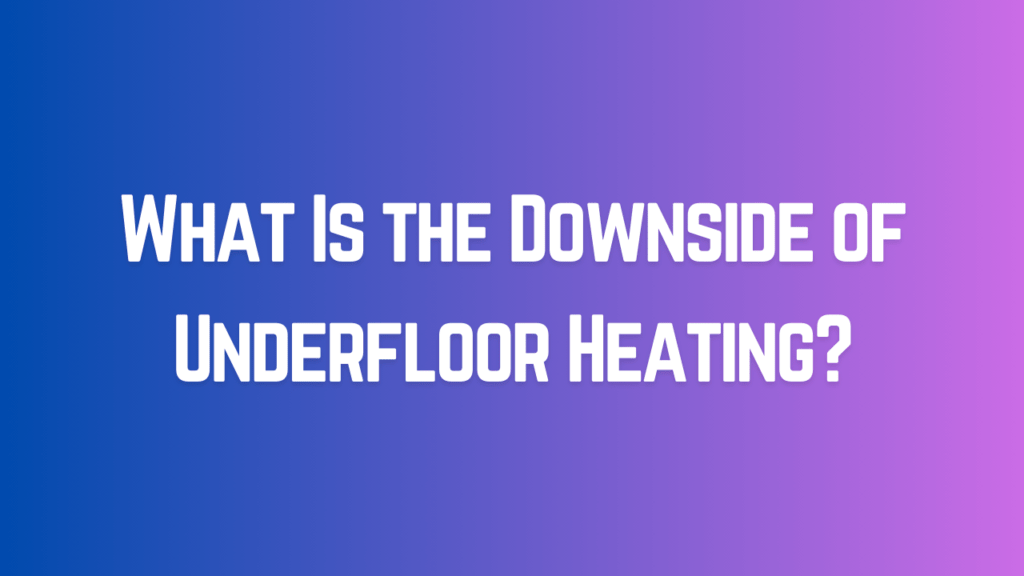
What is the downside of underfloor heating? Underfloor heating is an innovative and efficient way to heat your home, offering numerous advantages such as even distribution of warmth and energy efficiency. However, like any heating system, it also has its downsides. In this article, we will delve into the potential drawbacks of underfloor heating to provide you with a balanced perspective on this heating solution.
What Is Underfloor Heating?
Before we discuss the downsides, let’s briefly understand what underfloor heating is and how it works. Underfloor heating is a system that involves installing heating elements, either electric cables or water pipes, beneath the floor surface. These elements radiate heat upwards, warming the room from the ground up.
The Downsides of Underfloor Heating
Installation Costs: One of the significant drawbacks of underfloor heating is the initial installation cost. Installing underfloor heating can be more expensive than traditional heating systems, such as radiators. This is due to the complexity of laying heating elements under the floor, which may require professional expertise.
Disruption During Installation: Installing underfloor heating often involves lifting and replacing flooring. This can be disruptive and time-consuming, especially if you’re retrofitting it into an existing property. It may not be a practical choice for those looking for a quick heating solution.
Limited Control: Underfloor heating systems typically respond slower than radiators. Controlling the temperature in individual rooms can be challenging, as it usually requires zoning systems, adding complexity and cost to the installation.
Compatibility with Flooring: The type of flooring in your home can impact the efficiency of underfloor heating. While it works well with tile and stone floors, it may be less effective with thick carpets, which can insulate the heat.
Maintenance and Repairs: Underfloor heating systems are typically hidden beneath the floor, making identifying and fixing issues challenging. If a problem arises, accessing and repairing the heating elements can be labor-intensive and costly.
Energy Consumption: Although underfloor heating is generally energy-efficient in the long run, it may consume more electricity during the initial warm-up phase, potentially leading to higher energy bills.
Benefits of Underfloor Heating
While it’s important to understand the downsides, it’s equally essential to highlight the benefits of underfloor heating:
Even Heat Distribution: Underfloor heating provides uniform warmth throughout a room, eliminating cold spots.
Energy Efficiency: Once heated, the floor retains warmth, reducing the need for constant heating and lowering energy consumption.
Space Saving: Unlike radiators, underfloor heating doesn’t take up wall or floor space, allowing for more flexibility in room design.
Aesthetic Appeal: With no visible radiators, underfloor heating offers a cleaner and more aesthetically pleasing look to your living space.
Hydronic vs. Electric Options
You can choose between hydronic (water-based) and electric underfloor heating systems, depending on your preferences and budget.
Conclusion
In conclusion, underfloor heating offers several advantages but has its fair share of drawbacks, including installation costs, disruption, and potential maintenance challenges. However, understanding these downsides allows you to decide whether underfloor heating is the right choice for your home. If you’re interested in exploring this heating solution further or getting a quote for installation, please contact us at Fife Trades via email at fifetrades@gmail.com or visit our website’s contact page: Contact Us.
We are a company based in the Fife council area and provide services across all Fife areas, including Aberdour, Anstruther, Auchtermuchty, and many more. For more information about our services, visit our Services page, and to learn about our company, check out our About Us page.
